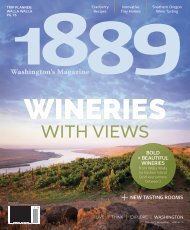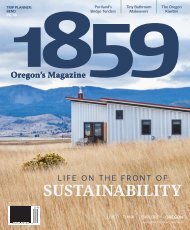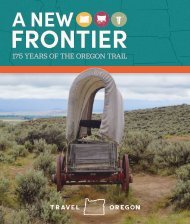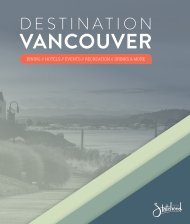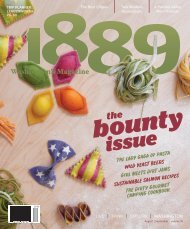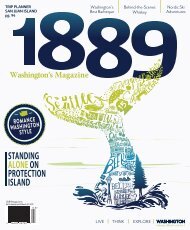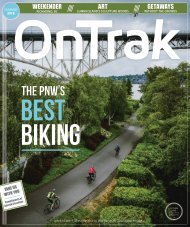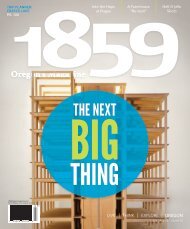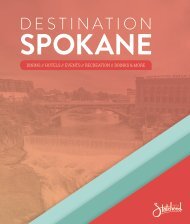You also want an ePaper? Increase the reach of your titles
YUMPU automatically turns print PDFs into web optimized ePapers that Google loves.
"We always felt<br />
that mobility<br />
was our<br />
safety. Safety<br />
harnesses—<br />
you'd stumble<br />
over them."<br />
— Jack Edwards<br />
Today, the Space Needle is the most visited tourist<br />
attraction in the Northwest, with more than a million<br />
visitors annually. But back in the early 1960s, the Space<br />
Needle was denied public funding and a group of forward-thinking<br />
men funded the project privately.<br />
In 1961, five investors purchased a plot of land within<br />
the fairgrounds. Real estate developer and financier<br />
Bagley Wright teamed up with Alaska Steamship<br />
president Ned Skinner and Weyerhaeuser Corporation<br />
president Norton Clapp to form the Pentagram Corporation.<br />
Together with the Howard S. Wright Construction<br />
Company, which would make architect John Graham<br />
Jr.’s plans a reality, they began construction right<br />
away.<br />
The World’s Fair was only a year away—it would<br />
be an epic sprint against time to be ready for opening<br />
day on April 21, 1961. US Steel called the Space<br />
Needle “The 400-Day Wonder.” The concrete pour for<br />
the foundation took a combined 467 cement trucks just<br />
twelve hours. It was the longest continuous concrete<br />
pour in the West. The workers balanced on beams hundreds<br />
of feet in the air without safety harnesses. “We<br />
always felt that mobility was our safety. Safety harnesses,<br />
you’d stumble over them,” construction worker Jack<br />
Edwards told The Seattle Times.<br />
ontrakmag.com WINTER <strong>2018</strong> | 43




